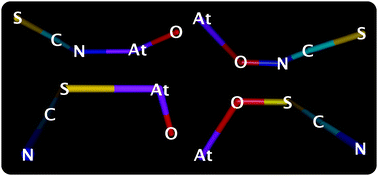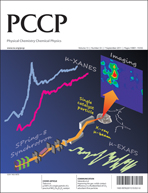Assessment of an effective quasirelativistic methodology designed to study astatine chemistry in aqueous solution†
Abstract
A cost-effective computational methodology designed to study astatine (At) chemistry in aqueous solution has been established. It is based on two-component spin–orbit density functional theory calculations and solvation calculations using the conductor-like polarizable continuum model in conjunction with specific astatine cavities. Theoretical calculations are confronted with


 Please wait while we load your content...
Please wait while we load your content...